#hikari instruments
Explore tagged Tumblr posts
Text
youtube
3 notes
·
View notes
Text
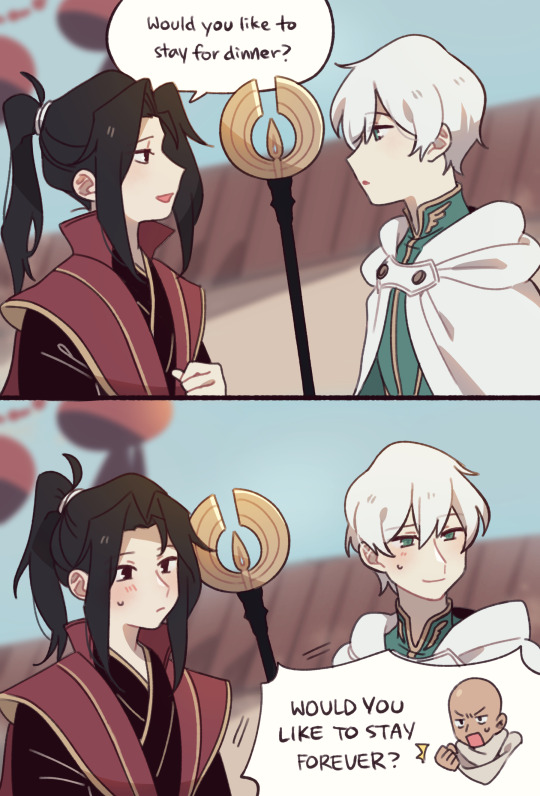

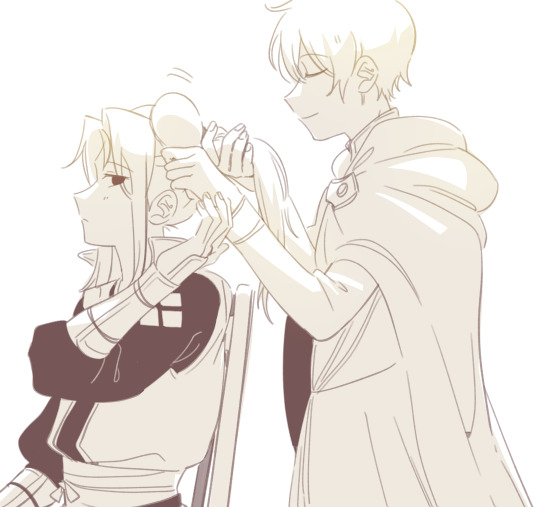


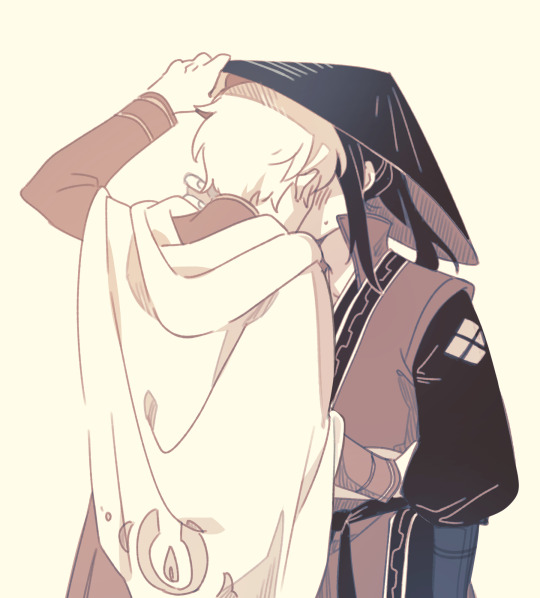
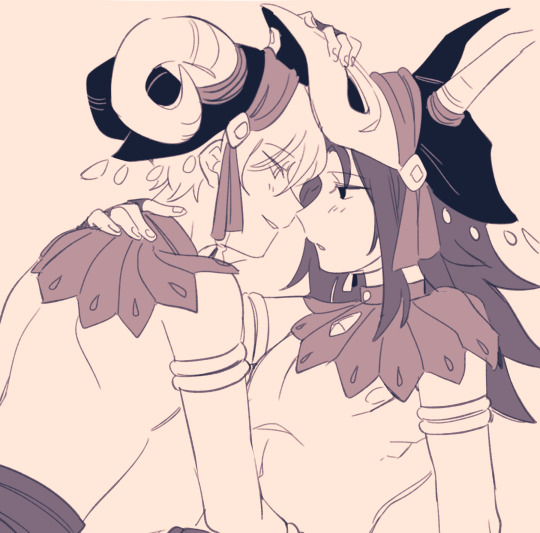
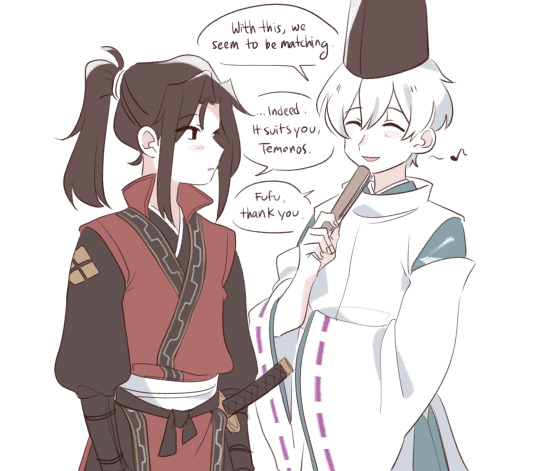
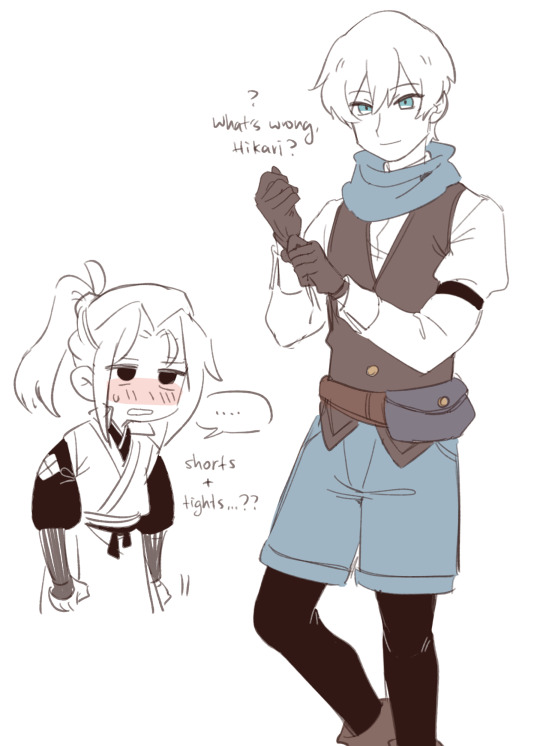
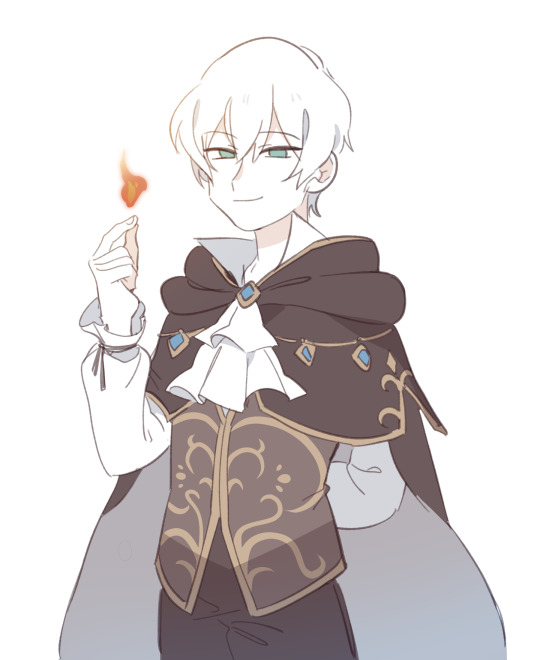
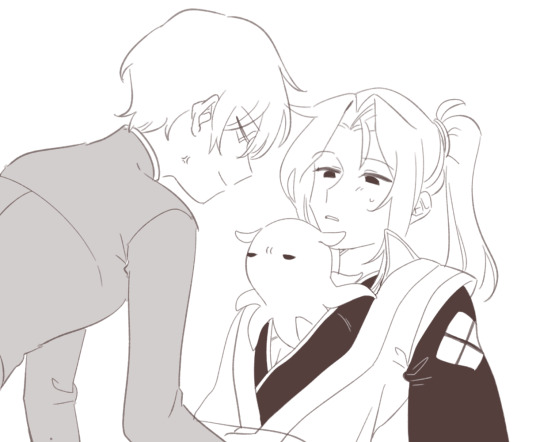

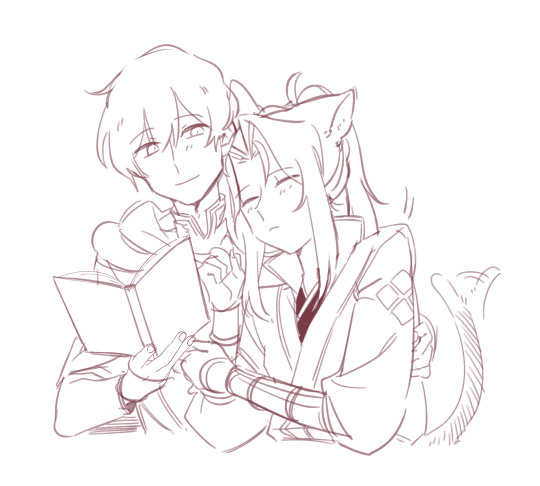

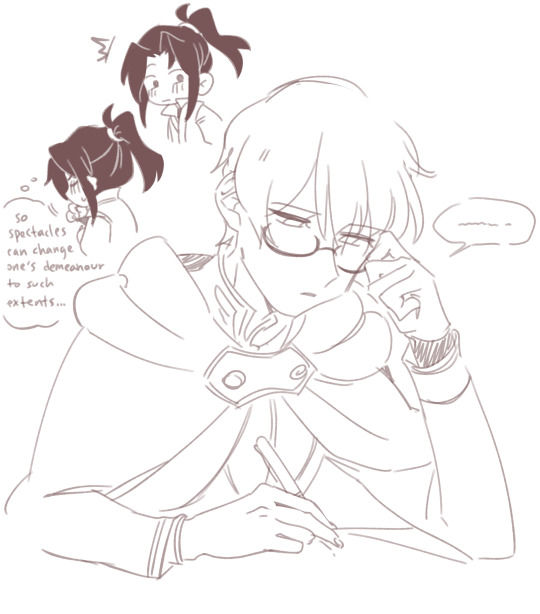
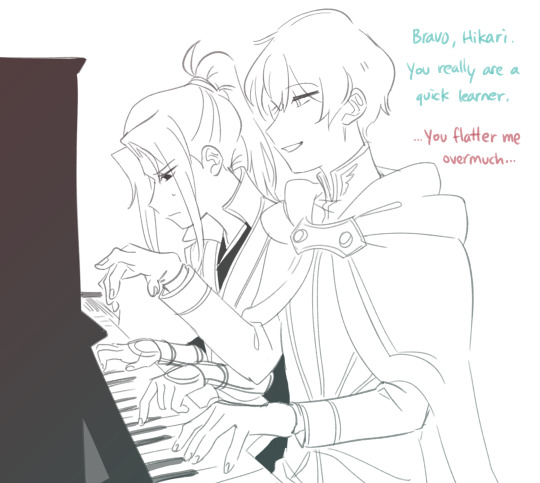
sketch dump
#octopath traveler 2#octopath traveler ii#satsuhart#temehika#hikari ku#temenos mistral#theres a concept artwork of the ost cover that shows temenos playing the piano#i wonder why they scrapped it.... is it bc its too similar to octo1 bbb cover :pensiv#anyway i thought itd be cute if he taught hikari how to play bc while hikari is shown playing a flute and also a lute (concept art)#i dont think he'd be familiar w instruments from outside ku and the piano isnt similar to anything hes tried before....#the piano playing cleric npc is from flamechurch too so maybe temenos?? learned from her?? idk#octo2
187 notes
·
View notes
Text
Recently I've been listening so much to radwimps but particularly to Yumebanchi and Stick Figure because they remind me so much of Miles and Phoenix respectively....
#like them in general as characters#not specifically about each other#ace attorney#honestly I just love illion's gentle voice and song writing so much#and the instruments always accompany it so well#there are so many songs from them I just love so much#like hikari#kaiko#yushinron#their movie tracks....#...I have a radwimps playlist of 50+ songs. I may be a tiny bit obsessed.
4 notes
·
View notes
Text
to me the laura palmer theme and the rei ayanami theme are the same
5 notes
·
View notes
Text
It’s that time again! Time to make a random list of things my ocs can or cannot do! This time it’s-
Instruments my ocs can play!
Ellis - Piano and Drums! and kazoo (she mostly sings!)
Victoria - Harpsichord and Organ
Ivy - Tambourine, Flute
Artemis - Ocarina, Guitar (electric and acoustic), Bass guitar, Pan pipes
Aimée - Lyre
Gwen - Harp, Piano, Flute
Hoshiko - Drums
Hikari - Guitar
Alice - Organ
Fabian - Guitar (electric and acoustic) Violin, Saxophone, and Piano (also mostly sings)
Astrid - Tambourine
Stella - Violin
#How did Artemis and Fabian learn how to play all those instruments? No idea!#It just sort of happened!#my ocs!!!#ellis clawthorne#victoria le fay#ivy villosa#artemis woodman#gwendolyn schnee#aimée amore#fabian nacht#alice darius#hoshiko itsuki#hikari itsuki#itsuki twins#astrid aneira#stella vega
4 notes
·
View notes
Video
youtube
[CLEAN INSTRUMENTAL] Sera Myu - Hitosuji no Hikari no Kokoro ~ Yabou no ...
#youtube#bishojo senshi sailor moon#bishoujo senshi sailor moon#sera myu#instrumental#kaguya shima densetsu#shin kaguya shima densetsu#hotaru tomoe#tomoe hotaru#hitosuji no hikari no kokoro ~ yabou no kao#mao mita#mita mao#atsushi kashimura#kashimura atsushi
0 notes
Text
for a second i was left taken aback but i rly love the new layers and textures on utada’s re-recording of hikari. dont love the new instrumentals which feel kinda… free sample pack beats
but if someone could put the new vocals over the old beats i’d love to hear it
#the instrumental kinda feels like rejected wii menu song#which sing bad but HIKARI???#FOR SIMPLE AND CLEAN???
0 notes
Note
Which Hikari twin do you think has the talent to play an instrument?
I think it's less about talent, and more about what will give you better access to tools to annoy your brother with

97 notes
·
View notes
Text
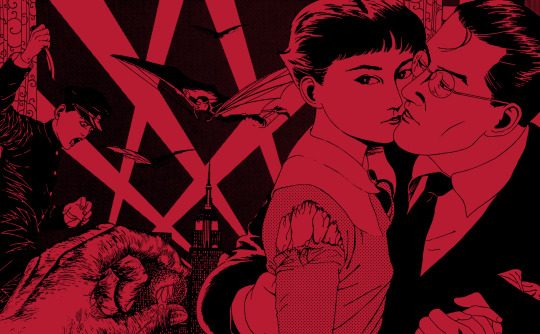
The Post-Futurist Fossils of LITCHI HIKARI CLUB In a somewhat recent research tangent, while considering the possible “genealogy” of the Tokyo Grand Guignol’s themes and aesthetics, I made an interesting personal discovery regarding Litchi Hikari Club. Specifically some distinct thematic parallels that the play shares with the Italian futurist movement, less in relation to the art of the movement itself, but rather the ideologies of the movement’s controversial founder, Filippo Tommaso Marinetti, and his relation to the Italian fascist party. This is all of course in the context of understanding Litchi as a transgressive/dystopian horror story. This is less of an absolute statement than it is a sort of open train of thought, so take things with a fair grain of salt. This is more or less just my own personal analysis of all the materials I could gather of the original play. Beyond inspecting the play as a possible allegory for futurism, there's also just a lot of general analysis of the play in relation to Ameya's overall body of work, both with the Tokyo Grand Guignol and also as a performance artist. I rarely put a 'keep reading' tag on these things since I'm an openly shameless product of the early days of blogging, but this one's a doozy (both in the information but also just the gargantuan length). Hopefully others will find it just as interesting. The full essay is below...
The futurist movement itself was nothing short of an oddity. In their time, the futurists were pioneers of avant-garde modernist aesthetics, with their works ranging from deconstructive paintings to reality-bending sculptures and even early pathways to noise music with the creation of the non-conventional Intonarumori instruments of Luigi Russolo. Russolo’s own futurist-adjacent manifesto, The Art of Noises, would go on to influence such artists as John Cage, Pierre Henry, Einstürzende Neubauten and the openly left-wing industrial collective Test Department. When visiting the MOMA in New York City as a child, I was fascinated by Boccioni’s Unique Forms of Continuity in Space, a sculpture that appeared to be a spacetime malformation of the human figure encapsulated in a continual state of forward motion while in total stillness. Despite this, the futurists were also a social movement of warmongering misogynists, with their own founding manifesto by Marinetti describing the bloodshed and cruelty of war as being “… the only cure for the world”. Their manifesto would also feature quotes such as “We want to demolish museums and libraries, fight morality, feminism and all opportunist and utilitarian cowardice”. They would originally pin anarchism as being their ideological ground in the manifesto, but shortly thereafter Marinetti would pick up an interest in fascism along with the politics of Benito Mussolini, going on to be a coauthor for the Italian fascist manifesto alongside the futurist manifesto. In consideration of how throughout most of World War II, modernist and post-modern works were considered “degenerate” forms of art in contrast with traditionalism, a whole avant-garde movement founded from fascist ideals is paradoxical. But for a period of time, that parallel wasn’t only in existence, but backed by Mussolini himself with there being a brief effort by Marinetti to make futurism the official aesthetic of fascist Italy. One of the draws of futurism for Marinetti was an underlying sense of violence and extremity. According to Marinetti, his initial inspiration for the movement was the sensations he felt in the aftermath of a car accident where he drove into a ditch after nearly running over a band of tricyclists. He conceived his works to be acts of social disruption, intending to put people in states of unrest to cause riots and similar bouts of violence. “Art, in fact, can be nothing but violence, cruelty, and injustice”. He sought to destroy history to pave the way for a rapid acceleration to futuristic technological revelation.

“As shown in Edogawa Rampo’s Boy Detectives Club, young men like to hide from a world of girls and adulthood to form their own secret societies.” - June Vol. 27 In Litchi Hikari Club, a group of middle school-aged boys are faced with a crisis on the brink of puberty. At the twilight of their childhoods, they form a secret society known as the Hikari Club (or Light Club), a collective that’s devoted to the active preservation of their shared youth and virginity. The boys naively mimic an authoritarian organization and its hierarchy as they seek a means to preserve their boyhood, which they see as being idyllic in contrast to adulthood, a dreary state of existence that they call old and tired in the Usamaru Furuya manga version of the story. Similarly, in the Litchi Hikari Club-inspired short manga Moon Age 15: Damnation, the boys go on to liken their hideout with the paradisiacal garden of Eden. In said story, Zera would directly name the poem Paradise Lost in reference to the discovery of their hideout by adults (arriving in the form of ground surveyors) and the wide-eyed daughter of a land broker, with their contact to the virgin industrialized land being an ideological tainting of the sacred lair. In their mission, they seek refuge in technological inhumanity by having their penises replaced with mechanized iron penises, symbolic devices of power and violence that can only procreate with other items of technology. Working in absolute secrecy, they collectively manufacture a robot known as Lychee. The purpose of Lychee, previously only known to Zera, isn’t revealed to the other club members until its completion. It’s when they unveil their “cute” robot in a scene that parallels the 1920 German expressionist film The Cabinet of Dr. Caligari that Zera tells the other members of Lychee’s purpose as a machine that would kidnap women for them. The robot's efforts are assisted by the girl capturing device, a strange rice cooker-shaped mask that’s laced with a sleeping drug. When questioned about the fuel source for the robot, Zera explains how it will run off the clean fuel of lychee fruits rather than an unsavory yet plentiful substance like electricity or gasoline as a means to further match the robot’s perceived beauty.
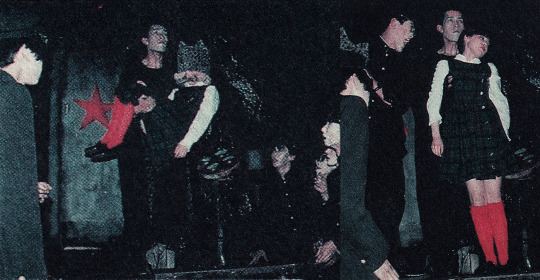
While the club share a general disdain for adulthood, they hold a special hatred to girls and women. Going off the dogmatic repulsion to sexuality that Kyusaku Shimada shows as the teacher in the Tokyo Grand Guignol’s prior play, Mercuro (1984), it could be assumed that the Hikari Club hold a similar dogmatic viewpoint about the vices of sex. In this context, it’s likely that they would’ve perceived women as being parasitic by nature as spreaders of the “old” and “tired” adult human condition through pubescent fixation and procreation. Sexual thoughts are inherent to aging for most people, given the process of discovering and exploring your identity throughout puberty. It’s that exact pubescent experience the club seek to eradicate. Further insight is given to the Hikari Club’s dystopian psyche through their open allusions to nazi ideology. While Zera travels out to gather lychees from a tree he planted, the club get a special visit from a depraved elderly showman known as the Marquis De Maruo, performed by none other than Suehiro Maruo himself in the 1985 Christmas performance. Despite the club’s disposition to adults, they hold an exception for the Marquis for his old-timey showmanship and open pandering to the children’s whims. He always comes with autopsy films to show the young boys, and as they watch the gory videos he hands out candies that he describes as being a personal favorite of the late Adolf Hitler. He was said to also be the one to convince the boys to name their robot after the lychee fruit. It isn’t until Zera returns that the Marquis is removed from the hideout on Zera’s orders. Just before his exiling, he foretells to Zera the prophecy of the black star as both a promise and a warning to the aspiring dictator. It should be noted that there is a fascist occult symbol known as the black sun.

Suehiro Maruo as the Marquis De Maruo. On the right side is a caricature of Maruo as drawn by a contributor to June magazine, excerpted from an editorial cartoon in June Vol. 27 covering Litchi's 1985 Christmas performance. In addition, the Marquis’ role alongside Jaibo’s appearances in the play (which I’ll get to later) show distinct parallels with the presence of the hobo in the Tokyo Grand Guignol’s first play, Mercuro. In Mercuro’s case, the hobo (performed by Norimizu Ameya, who would go on to also act as Jaibo) visits the classroom in secrecy to lecture the students his depraved ideologies. Whilst the hobo in Mercuro was a figure of perversion that existed in contrast to the teacher’s paranoid conservatism, in Litchi both Jaibo and the Marquis are enablers of the club’s fascistic leanings, with the Marquis being a promoter whereas Jaibo is a direct representation of the underlining perversions of fascist violence. Though completely omitted from the Furuya manga, the element of the autopsy films shines a unique light on Zera’s death at the end of the story. In both the play and the manga, Zera is gutted alive by Lychee when the robot undergoes a meltdown after being forced to drown Kanon (Marin in the original play) in a coffin lined with roses. In the manga, Zera appears deeply unsettled when realizing his intestines resemble the internals of an adult. It’s unknown if this aspect is present in the theater version, as the full script remains unreleased to this day. It would fit however knowing not just the club’s repulsion to adulthood, but also how they retreat to technological modification to eradicate the human aspects they associate with adulthood. What is described of Zera’s death in the theater version has its own disquieting qualities as, from what’s mentioned, when confronted with his own mortality he appears to regress to a state of childlike delirium, a demeanor that’s drastically different from his usual calm and orderly presentation. Upon seeing his intestines, one of the responses he is able to muster is “I’m in trouble”. He says this as he questions whether or not he can fit his organs back inside the cavity before eventually telling himself that he’s just tired, that he “need(s) to sleep for a while”.

While never directly stated, it’s heavily implied that the club’s ideologies and technological fetishism ultimately root back to Jaibo, an ambiguously European transfer student who secretly manipulates the club’s actions from behind the scenes. Referred to by Hiroyuki Tsunekawa (Zera’s actor) as the “true dark emperor” of the Hikari Club, he was said to haunt the stage from the sides, closely inspecting the Hikari Club’s activities while keeping a distance. The iron phallus was first introduced by Jaibo through a monologue where he reveals how he fixed one to his own person, carefully describing its inner mechanisms and functionality before demonstrating its inhuman reproductive qualities by using the phallus to have sex with a TV. A television that he affectionately refers to as Psychic TV Chan, in reference to the post-industrial band fronted by Genesis P’Orridge. In the same scene, he promises the other members that they would all eventually get their own iron penises just like his own. In a subsequent scene, he reveals the iron phallus’ use as a weapon when, arriving to the club’s base with a chained-up female schoolteacher who accidentally discovered the sanctuary, he uses the device to brutally kill the teacher through a mocking simulation of sexual intercourse. Just before raping her, he likens her to a landrace, bred for the sole purpose of reproducing and being processed into meat for consumption. He menacingly tells her that he will make her as “cut and dry” as her role in society before carrying out her execution. While there was some confusion on whether or not the iron phallus was a machine or solely a chastity device, it was found in bits of dialogue that the iron phallus at least shares the qualities of a pump with a described set of rubber hinges. The teacher’s death gruesomely reflects the death of Kei Fujiwara’s character in the later film Tetsuo: The Iron Man (1989), with the iron phallus mangling her insides as blood splatters across the stage. While the club treats adult sexuality as a plague, they manage to find through the iron phallus a way to convert their own states of chastity into a form of violence, stripping all humanity away from the penis and rendering it to a weapon of absolute power through desolate mechanized cruelty.
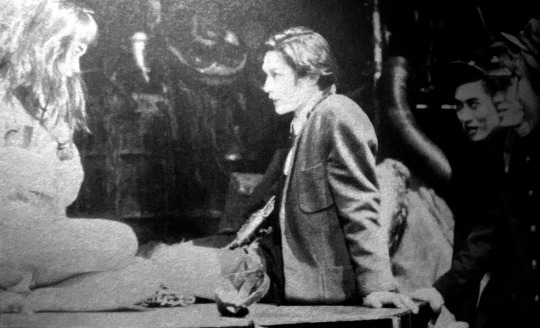
JAIBO: ��Length, 250 mm, with a weight of 2.4 kilograms. Arm diameter, 30mm. Cylindrical thrust, 170mm… With pins, plates and rods of die-cast alloy. And hinges of rubber… the rest is pure iron. It is the iron phallus.” - June Vol. 27 In the same interview, Tsunekawa would go on to recall how the members of the Hikari Club were effectively Jaibo’s guinea pigs. In both the play and the manga, an after-school night of the long knives ensues with the slow collapse of the Hikari Club as Jaibo influences the exiling of certain club members, with Zera left ignorant to the social engineering as a mere extension of Jaibo’s elaborate puppeteering. Left embittered by a chess match where he lost to Zera, Tamiya is easily tricked by Jaibo into burning the lychee field as a way to get vengeance. Upon being caught, Tamiya is castrated of his iron phallus, resulting in his exiling from the club as a traitor while also being mockingly likened to a woman in the process. In another scene, it’s recalled that Jaibo and Zera exchange a conversation about the Hikari Club’s loyalty to Zera as they observe the outside world through their periscopes. By all contemporary recollections, Jaibo was the club’s puppet master. He would’ve been the likely source of the club’s ideologies, the underlining hatred to women and fixation on technological violence, replacing mankind with a race of humanoid weapons. Zera would be a shell without his influence. The presence of futurism could arguably even be rounded down to Lychee’s presence in the story. Beyond his theoretic work, Marinetti was also a playwright. He would be most well known for his futurist drama La donna è mobile, a story riddled with similarly perverse renditions of sexual violence. The play notably featured the presence of humanoid automatons a full decade before the term “robot” would be coined by Czechoslovakian author Karel Čapek in the play R.U.R., with the French version of Marinetti’s script referring to the machines as “puppets” for their visual similarity to humans.
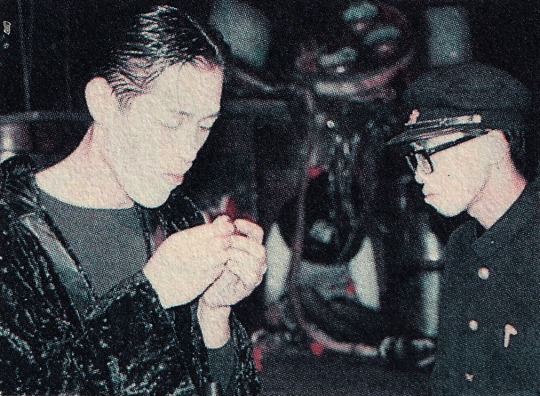
All of this plays out over a soundscape that’s dominated by unnatural electronic frequencies and synthesized percussion. The sound design was arguably one of the most important aspects of Ameya’s plays, with Ameya at one point describing the Tokyo Grand Guignol productions as being an ensemble of his favorite sounds. The setting further compliments the atmosphere, made to resemble the internal of a junkyard or factory warehouse where heaps of technical jump decorate the stage around the monochrome cabinet that would eventually birth Lychee. Some of the featured artists in the play’s first act include Test Department, The Residents, 23 Skidoo and Deutsch Amerikanische Freundschaft. The play’s opening, which depicts the capturing and subsequent torture of a student named Toba through a so-called “baptism of light”, is underscored by the S.P.K. song Culturcide, a grim primordial industrial dirge that paints the image of a dystopia where the genocide of ethnic cultures is likened to the infection of human cells by parasitic pathogens. Instead of being hung with a noose, Toba is suspended by a meathook, left as a decoration amidst the heaps of mechanized excrement. He would eventually be joined by the lifeless bodies of various women the Hikari Club abduct as they’re steadily gathered in a small box at the back of the stage. “Membrane torn apart, scavenging with the nomads. Requiem for the vestiges. Dissected, reproduced. The nucleus is infected with hybrid’s seed. Needles soak up, the weak must destroy. Cells cry out, cells scream out. Culturcide! Culturcide! Culturcide! Culturcide!” - Culturcide (from S.P.K.'s Dekompositiones EP)
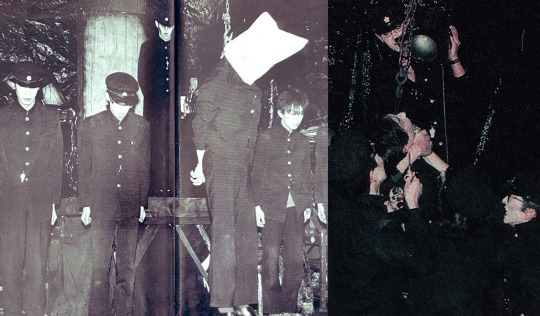
“We are now entering an era which history will come to call ANOTHER DARK AGE. But, in kontrast to the original Dark Age, defined by a lack of information, we suffer from an excess of information, which has been reduced to the repetition of media-generated signs. Through this specialization, it is no longer possible for an individual to attain a total view of society. Edukation is struktured to the performance of a limited number of funktions rather than for kreativity.” “Kommunications systems are designed for the passive entertainment of the konsumer rather than the aktive stimulation of the user’s imagination. Through the spread of the western media, all kultures come to stimulate one another. By the end of the millennium, this biological infektion will have penetrated the heart of the most isolated traditions - a total CULTURCIDE.” “Yet in every era, a small number of visionaries rise above the general malaise. Those who will succeed, will resist the pressure to become kommercialized “images”, demanding identifikation and imitation. They will uphold their principles in the face of impossible odds. By remaining anonymous, they will be free to develop their imagination with maximum diversity. For this is the TWILIGHT OF THE IDOLS, - the end of the proliferation of the ikons and the advent of a new symbolism.” - From the back cover of S.P.K.’s Dekompositiones EP (released under the moniker SepPuKu) Over the course of the play, the story undergoes a drastic tonal shift as the focus moves from the Hikari Club’s hierarchical order and internal conflicts to the relationship between Lychee and Marin. Marin (performed by synthpop musician Miharu Koshi) was the first girl the Hikari Club successfully kidnap through Lychee after implementing the phrase “I am a human” in Lychee’s coding so it can understand the concept of human beauty. This small implementation causes a full unraveling in Lychee’s personality as it quickly forms a close bond with Marin, convinced that it is also a human like Marin. The soundscape changes alongside the overarching atmosphere, going from cold industrial drones and percussive electronica to ambient tracks. Some of the major scenes play out over moving piano-focused pieces and music box tunes from Haruomi Hosono’s soundtrack for Night on the Galactic Railroad. Originally created a weapon like the iron phalluses and the girl capturing device, Lychee is eventually defined in how he transcends from being a weapon to a conscious being with feelings. In this context, the play can be read as a juxtaposition of human emotion against inhuman futurist brutality.
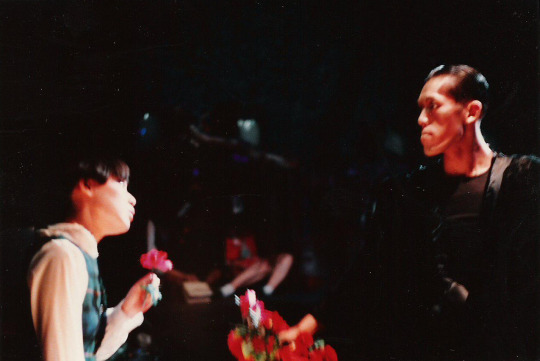
This split was likely the product of the radically different creative ideologies of Norimizu Ameya (the Tokyo Grand Guignol’s founder and lead director) and pseudonymous author K. Tagane (the playwright for the group from Mercuro to Litchi). Ameya had come into the group with radical intentions, holding Artaudesque aspirations to transgress the literary limits of modern theater to achieve something deeply subconscious. Meanwhile, Tagane was a romantic who was known for their poetic and lyrical screenplays. Ameya purportedly sought out Tagane’s screenplays specifically to find a literary base he would “destroy” in his direction, deconstructing the poeticisms in his own unique style. He describes it briefly in an interview regarding the stage directions of Mercuro, stating how he took elaborate descriptions of a lingering moon and ultimately deconstructed them to the moon solely being an illusion set by a screen projector, mapping out the exact dimensions of the projection to being a 3-meter photograph of the moon rather than a “fantastic moon”. It’s believed by some that the Tokyo Grand Guignol’s formation and ultimately short run were the product of a miraculous balance between Ameya and Tagane’s ideologies. It’s possible that Litchi could’ve been a last straw between the two artists. After Litchi, Tagane left the group, with Ameya having to write the troupe’s final screenplay on his own. LYCHEE: “Marin is always sleeping… all she does is sleep. She doesn’t eat anything. Why does Marin sleep all day?” MARIN: “When you’re asleep, all the sadness of the world passes over you.”

"The second half of Litchi was predominantly driven by the sounds of Ryuichi Sakamoto and Haruomi Hosono. During a scene that featured a piece from the Galactic Railroad soundtrack, Miharu Koshi sang to Kyusaku Shimada while dancing like a clockwork doll to the sounds of a twisting music box. The scene lasted for a while and was very romantic, the interactions between Lychee and Marin were all very sweet and cute. The second act of Litchi was all a product of Tagane’s making. By the time of the following play, Walpurgis, I was told by a staff member that Ameya had written the screenplay by himself because Tagane had left.” “… While the first half was filled with repeated mantras and the unfolding aesthetics of an aspiring militia, the second half was immersed in the world of shoujo manga. It did appear that through the intermission, much of the junk and rubble around the podium was sorted out.” “… The Tokyo Grand Guignol’s plays were always defined by a strong nocturnal atmosphere. But in Litchi’s second half, it wasn’t a dark night, but a brightly lit one under the moonlight and plentiful stars in the sky shining through an invisible skylight. Marin doesn’t forgive Lychee immediately for his actions, responding to him harshly in a way that would confuse him and make him sulk. It came across as a somewhat bitter reimagining of a French comedy like Louis Malle’s Zazie dans le Métro or Jean-Pierre Jeunet’s Amélie, it was different that way in how it wasn’t only Maruo’s inferno.” - From a Twitter thread by user Shoru Toji regarding the 1986 rerun of Litchi Hikari Club Some questionable qualities do exist in the relationship between Lychee and Marin. What should be a peaceful retreat from the dystopian corruption still has a sinister undertone in the disparities between Lychee’s cold masculine features in contrast with Marin’s childlike girly innocence. It doesn’t help that Zazie dans le Métro (one of the mentioned films in the recollection) was directed by Louis Malle, who while known for such films as My Dinner With Andre and Black Moon was also responsible for the infamously discomforting Pretty Baby. Then again, Litchi was the product of a confrontational transgressive subculture, so the sinister undertones could be intentional. Keep in mind the contents of Suehiro Maruo’s prolific adaption of Shōjo Tsubaki and how it unflinchingly depicts abuse and manipulation through the eyes of a confused child. It could be possible that Lychee himself was intended to be childlike in its mannerisms. Throughout the existing descriptions, Lychee was shown as speaking in fragmented sentences while struggling to understand basic concepts. Zera was mentioned to also use certain phrases like “cute” when referring to the robot when it was unveiled. And it’s through Marin that Lychee learns morality like a child. The robot’s masculinity could be passed off as the cast all being adults. Hiroyuki Tsunekawa for instance shows distinctly sculpted features from certain angles when performing Zera.
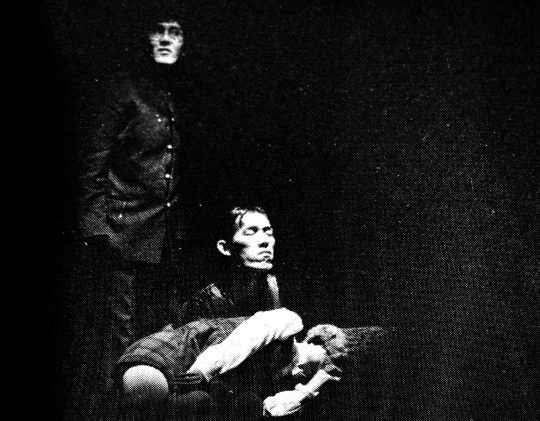
In his aspirations to become a human, Lychee eventually “dies” like a human. With the burning of Zera’s lychee tree, the robot is left with a finite limit on its remaining energy before it totally loses consciousness. After his rampage, Lychee attempts to reunite with Marin, but he runs out of fuel. Before what should be a moment of resolution, things are cut short as the stage goes black, eventually illuminated to show an unpowered Lychee cradling Marin’s corpse in his arms. Zera reemerges to observe the remnants of Lychee and Marin. He speaks of how Lychee will crumble into nothingness alongside Marin for foolishly giving into human emotion, further implying the club’s views on humanity. After this, recollections of the play’s final lines differentiate somewhat. It was said that in the original Christmas performance, Zera calls out to Jaibo, posing the corpses of Lychee and Marin as being his seasonal gifts to Jaibo. Whereas in most popular recollections, it’s described that after his monologue, Zera shouts “Wohlan! Beginnen!” (German for “Now! Begin!”) before prompting the decorations across the stage to collapse, revealing a set of stepladders from behind that the remaining previously deceased club members stand, all drenched in blood with spotlights illuminating their faces from below. ZERA: “And with that, our tale of a foolish romance between woman and machine reaches its conclusion. It ends before me as I stand here, watching. Lychee, the machine, will rust away into dust. And Marin, a young girl, will rot away leaving behind only her bones, which too will crumble…”
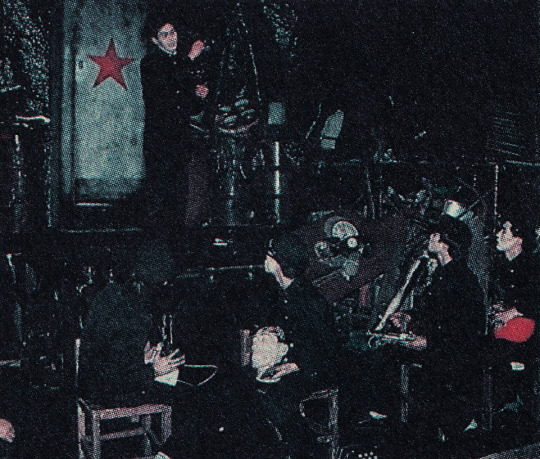
Multiple readings can be deciphered from this conclusion. The most established theory is in relation to the Hikari Club’s aspirations for eternal youth, with the members technically achieving their goal through the stagnation of death. They will remain eternal children since they died as children, unable to ever grow into adulthood. In the context of futurism and mechanized fascism however, it could be read as a bitter observation of a lasting dictatorship. With how the Hikari Club members had rendered themselves less human than their own robot, they survive death to continue their work, seeking to one day eradicate humanity in favor of a race of sentient childlike weapons. “To admire an old picture is to pour our sensibility into a funeral urn instead of casting it forward with violent spurts of creation and action. Do you want to waste the best part of your strength in a useless admiration of the past, from which you will emerge exhausted, diminished, trampled on?” “… For the dying, for invalids and for prisoners it may be all right. It is, perhaps, some sort of balm for their wounds, the admirable past, at a moment when the future is denied them. But we will have none of it, we, the young, strong and living Futurists! Let the good incendiaries with charred fingers come! Here they are! Heap up the fire to the shelves of the libraries! Divert the canals to flood the cellars of the museums! Let the glorious canvases swim ashore! Take the picks and hammers! Undermine the foundation of venerable towns! The oldest among us are not yet thirty years old: we have therefore at least ten years to accomplish our task. When we are forty let younger and stronger men than we throw us in the waste paper basket like useless manuscripts! They will come against us from afar, leaping on the light cadence of their first poems, clutching the air with their predatory fingers and sniffing at the gates of the academies the good scent of our decaying spirits, already promised to the catacombs of the libraries.” - from the 1909 Futurist Manifesto by Filippo Tommaso Marinetti

I forgot what exactly first caused the parallel to cross my mind. I do recall it being reignited when having a closer look over the poster and flyer for Litchi’s Christmas performance in December 1985. The flyer in particular is really a wonderful thing to look at. Predominantly featuring an art spread by Suehiro Maruo, a suited man with Kyusaku Shimada’s likeness is shown caressing a girl in front of a modernist cityscape with spotlights shining up to a night sky. Other suited men in goggles fly in the air with Da Vinci-reminiscent flying apparatuses between the beams of the metropolis’ spotlights. A student in full gakuran uniform flings himself into the scene from the far left side of the image with a dagger in hand, and a larger hand comes from the viewer’s perspective holding a partially peeled lychee fruit. While not based on any direct scene from the play, it perfectly instills the play’s atmosphere with an air of antiquated modernity, like the numerous illustrations of the early 1900s that show aspirational visions of what a futuristic cityscape might resemble. The bizarre neo-Victorian fashions of the future and its post-modernist formalities. The term futurism came to mind somewhat naively from this train of thought. It was a movement I recalled hearing about, but my memory of it was hazy. It wasn’t until I went in for a basic refresher that I felt the figurative lightbulb go off in my head. That was when the pieces started to come together, but then also strain apart from each other into tangents. Granted, many of these parallels could be read as coincidental. Many of them can even be passed off the play being a work of proto-cyberpunk, knowing how Tetsuo: The Iron Man would subsequently explore similar themes of cybernetics and human sexuality. It should still be noted however that in contrast with many of the Japanese cyberpunk films, Litchi was explicit in its connotations between technological inhumanity and fascism, with the machinery itself being the iconography of a dictatorship rather than a product of it. In addition, with Tetsuo the film has strong gay overtones, with the technology being an extension of the sexual tensions between the salaryman and the metal fetishist. For a period of time, efforts were made to make futurism the official aesthetic of fascist Italy, and modern fascism as we know it is in the same family tree of Italian philosophy as futurism. The Hikari Club are explicit in drawing from German aesthetics rather than Italian however, speaking in intermittent German and predominantly using German technology. The spotlight that they used when torturing Toba in the first act, for example, was a Hustadt Leuchten branded spotlight. And if that isn’t a German name I don’t know what is. It was also said that Jaibo’s outfit in the play was modeled after German school uniforms. Though then again, the Tokyo Grand Guignol’s works were a bit of a cultural slurry. Jaibo’s name for example is Spanish (derived from Luis Buñuel’s Los Olvidados), while the character is implied to be German.
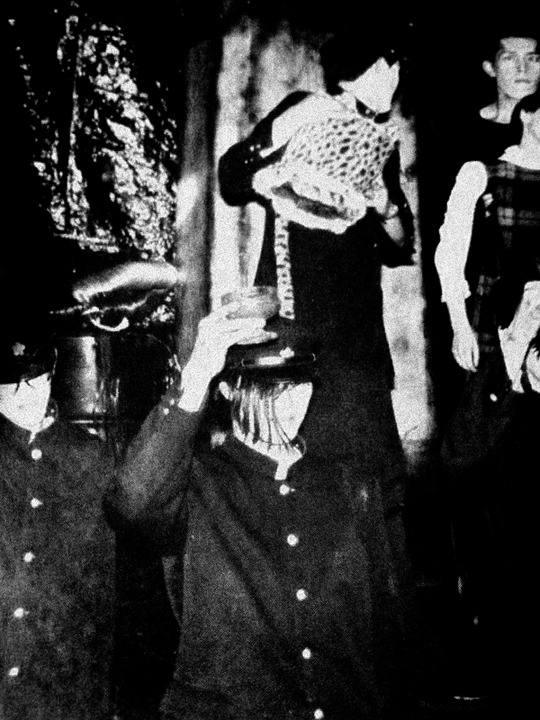
Similar to the cited origins of futurism, Ameya stated in a 2019 tweet regarding the June 9th, 1985 abridged Mercuro performance on Tokumitsu Kazuo’s TV Forum that in the following August of that year, an airplane accident occurred that led to the conception of Litchi’s screenplay. The exact nature of the accident was never specified, but the affiliates he was communicating with all appeared to be familiar with it and expressed concern when it was brought up. This was however one of an assortment of influences that were cited behind Litchi’s production, with the two more established theories regarding the then-contemporary mystique around lychee fruit in Chinese cuisine along with the play being a loose adaption of Kazuo Umezu’s My Name is Shingo. For what it’s worth, the themes of Litchi, along with the Tokyo Grand Guignol’s other works, were closely tied with certain concepts that Ameya personally cultivated throughout his career. A frequent recurring topic Ameya would bring up in relation to his works was the nature of the human body in relation to foreign matter, need it be biological or unnatural. With Mercuro the students taught by Shimada are made into so-called Mercuroids by having their blood supplies replaced with mercurochrome, a substance that is referred to as the “antithesis of blood” by Shimada while in character. In an interview for the book About Artaud?, Ameya cites an interest in Osamu Tezuka’s manga in how certain stories of Tezuka’s paralleled Ameya’s observations of the body. He directly names Dororo and Black Jack, observing how both Hyakkimaru and Black Jack reconstructed their bodies from pieces of other people, going on to bluntly describe Pinoko as a “mass of organs covered in plastic skin”.

A section from June Vol. 27 highlighting some of the more established performers from Litchi's 1985 Christmas performance. The actors from left to right are Norimizu Ameya as Jaibo, Naomi Hagio as the female school teacher (best known in cult circles for her role as Kazuyo in the 1986 horror film Entrails of a Virgin), Suehiro Maruo out of costume and Miharu Koshi as Marin. During his temporary retirement from theater, Ameya would take up performance art, with some of his performances revolving around acts with his own blood. While my memories of these works are a bit hazy, I remember one action he performed that involved a blood transfusion, with the focus being on the experience of having another person’s blood coursing through your veins. While I didn't have much luck relocating this piece (probably from it not being covered in English), I did find on the Japan Foundation’s page for performing arts an interview where Ameya discusses being in a band with Shimada where Ameya had blood drawn from his body while he played drums. He would also describe an art exhibition where he displayed samples of the blood of a person infected with HIV. “After 1990 he left the field of theatre and began to engage himself with visual arts - still proceeding to work on his major topic - the human body - taking up themes like blood transfusion, artificial fertilization, infectious diseases, selective breeding, chemical food, and sex discrimination, creating works as a member of the collaboration unit Technocrat.” - Performing Arts Network Japan (The Japan Foundation) There are still an assortment of open questions I’m left with in regards to the contents of the original Litchi play. One of the most glaring ones is Niko’s eye. In consideration of Ameya’s interest in the body, the detail would fit perfectly with his ideologies. A club member who, to show his absolute loyalty to the Hikari Club, has his own eyeball procedurally gouged out to be made a part of the Lychee robot. Despite this perfect alignment, none of the contemporary recollections mention this element. While Niko does have an eyepatch in certain production photos, it never seems to come up as a plot point. He isn’t the only one to bear an eyepatch either, with Jacob also being shown with an eyepatch in flyers. More questions range from Jaibo’s motives in causing the dissolution of the Hikari Club to the true nature of Zera’s affiliation to Jaibo. While Tsunekawa has stood his ground in the relationship between Zera and Jaibo being totally sexless, in the cited volume of June the editor playfully refers to Jaibo as being Zera’s “best friend” in quotes.
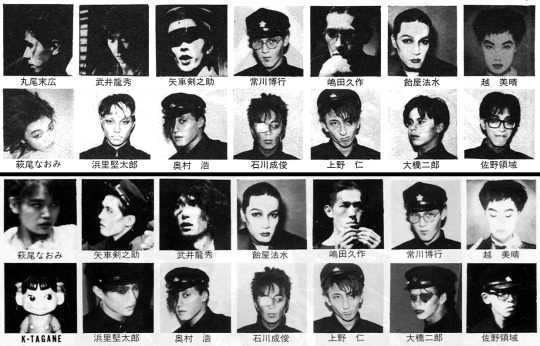
A side-by-side comparison of the cast listings on the back of the flyers for the December 1985 performance of Litchi Hikari Club alongside its 1986 rerun. The 1985 run's lineup is at the top while the 1986 run is at the bottom. Much speculation is naturally involved when looking into the original Litchi Hikari Club since it is in essence a cultural phantom. There’s a reason I used the term genealogy in relation to my research of the Tokyo Grand Guignol’s works. It is an artistic enigma as while its presence lingers in subculture, the original works are now practically unattainable due to the inherent nature of theater. As Ameya himself would acknowledge in another interview, theater is an immediate medium that can only be perceived in its truest form for a very short span of time before eventually disintegrating. So with the Tokyo Grand Guignol’s plays, you are left to scour through the scattered remnants and contemporary recollections alongside the figurative creative descendants of the plays. You analyze the statements of both the original participants and the people they openly dismiss, as even those people were original audience members before reinterpreting the plays to their own unique visions. Despite the apparent differences, I still feel that Furuya’s manga gives a unique perspective to the story when viewed under dissection. That is if you want to see it in strict relation to the play. Outside that, I feel it firmly stands on its own merits. I like the manga no matter what Tsunekawa says, that’s what I’m trying to say. Ameya approved it anyway. It took me a full day to write all this out, and like the first time I went down this train of thought, I’m pooped. During that first excursion, after excitedly spiraling through these potential connections, I noticed in passing mention something about Marinetti’s cooking. You see, later in his life Marinetti aimed to apply futurism not just to art and theater, but cuisine also. As an Italian, Marinetti openly despised pasta, seeing it as being an edible slog that weighs down the spirits of the Italian people. Just further evidence that I would never get along with the man, no matter my liking of the Boccioni sculpture I saw at MOMA all those years ago. Well, outside of him being a fascist and all obviously. I like pasta. Either way, he was on a mission to conceive all-new all-Italian cuisines that would match the vision he had of a new fascist Italy. Nothing could prepare me though for when I saw an image of what would best be described as a towering cock and ball torture meat totem. It is exactly as it sounds, a big phallic tower of cooked meat with a set of gigantic dough-covered balls of chicken flesh on the front and back where you have to stick needles through the thing to hold it together. Words cannot express just how big it is. The thing was damn well near falling apart from how unnatural its shape was, and you’re expected to eat it while it has honey pouring from the tip of the tower. I genuinely winced watching its assembly, I instinctively crossed my legs somewhat when it was pierced by wooden sticks and then cut into sections to reveal the plant-stuffed interiors. As a person with no interest whatsoever in cooking shows, I was on the edge of my seat watching a PBS-funded webisode of someone preparing futurist dishes. Seek it out for yourself, it’s an excessively batshit culinary freakshow. That is more than enough talk about penises for the rest of the week. I’m going to spend the next few days looking at artistic yet selectively vaginal flowers to balance things out, equal opportunity symbology.

280 notes
·
View notes
Note
Hi Sarah! I have a question. The other day, the audio for "Hikari Furu with strings ver." was posted on YouTube. As far as I can remember, there is no official release of the "Hikari Furu with strings ver." audio, so do you know when this audio was released?
I also considered the possibility that the poster mixed new instrumental parts into the existing vocal data. However, even after comparing it with Kalafina's one-man live audio and live recordings already released such as "Animelo" and "Lisani", I was unable to find any vocal data that perfectly matched this strange video. Can you and followers of this blog solve this mystery? (I hope that the recordings of "Kalafina with strings LIVE" will be officially released.)
Hi there!

The video you mention is from the same YouTube Channel I talked about in a previous ASK HERE. I suspect it's also from the same person who uploaded that so-called unreleased "sprinter" live performance from last year (post 1 / post 2 / post 3 / post 4).
This "Kalafina Records" channel pretends to post "new" and/or "unreleased" content, however, I don't believe any of this is legit. These are all edits and compilations of already existing content but everything is changed in such a manner that the stuff appears new to casual fans. Among other things, they even have a fake "THE FIRST TAKE" performance which has gotten quite a lot of views. Apparently lots of people fall for a trap like that and actually believe this is real.
As you say, there's no official audio for this mysterious "Hikari Furu with strings" so for me, that's pretty much the end of the story. Even if this were a private bootlegged recording from a concert (which I very much doubt), it would not sound distorted like this. I only briefly skimmed through the video (I refuse to give this channel more of my view-time than necessary) but it was obvious from the get-go that the creator used some heavy-duty editing techniques and was possibly relying on more than one audio-track as base. The final result sounds pretty shitty if you ask me and you can definitely tell that someone manipulated the audio. There are so many programs/tools which can isolate or subtract certain vocals and instruments so this person clearly made use of them.
At the top of my head, I couldn't even list all the existing audio tracks from Kalafina's live performances of "Hikari Furu" (there are quite a few) but if anyone has the time as well as tools to try and compare all of them (+ the studio version) with this video, feel free to do that. But as mentioned above, I think it's not gonna be easy because this video could be a mixture of many different audio tracks.
Fair warning: I'd strongly advise against engaging too much with this channel's content. Imposters and attention-seekers like that should not be rewarded with views or subscriptions (which is why I am not linking to anything specific in this post).
11 notes
·
View notes
Text
Kalafina Anniversary Concert Review
Ok, it’s time for me to do my review of Kalafina’s Reunion Concert. First of all, a warning: this will be cheesy, a bit delusional, and include some reflections. I might also misremember some details since I’m writing this three days after the concert.
To start off, it was an absolute honor to be there and witness them sing together again. You have no idea how happy I was when I first heard the news of their reunion concert. Even though there are still ongoing issues, I’m so glad they pushed through with it.
I want to thank Sarah for helping me get a ticket. I’m truly grateful—it might have been impossible for me to secure one on my own. Also, it was so nice meeting you! And thank you for the gift ❤️
Sitting there in the Tokyo Garden Theater felt surreal, like a dream. Was this really happening?
From my point of view (I was in the arena, so my perspective was limited), I didn’t see any vacant seats. It was clear that so many people truly wanted to attend this concert. My seat in the arena had an okay view—not too far—and the energy was through the roof. It felt like all the hyper fans were gathered there! 😂 I had to stand up a lot and did so many gestures that the next day my body was sore. My creaking joints were complaining, but hey, I’d do anything for Kalafina!
Onto the concert...
Oblivious. An obvious start, since it was their very first song. The girls seemed a little tense; I could sense some awkwardness. Maybe it was just nerves at the beginning of the concert or uncertainty about how the audience would react. They didn’t need to worry—every single one of us there adored them and came to celebrate Kalafina’s anniversary.
Kizuato. A little shaky, and I could still feel some awkwardness. Perhaps it’s because they haven’t sung together in a while—or maybe I’m overanalyzing.
Mirai. It took me the longest time to remember this song’s title. It wasn’t until they sang “Mirai” that it clicked for me, lol.
MC: Hikaru was so cute! I’m incredibly proud of her; she’s grown so much and seems more confident. She’s also such a comedian. 😂 She directed the cheers by sections, and it was such a cute moment.
Hikari no Senritsu. This was the turning point where they really started coming together. Their on-stage chemistry returned, and it was a wonderful performance—I truly enjoyed it. This was also when I noticed how much Wakana’s singing voice has strengthened over the years.
Storia. I was hoping for this song, and they didn’t disappoint! Storia is one of my favorites because of how smoothly it flows, much like Hikari no Senritsu. Seeing their simple dance moves again brought so much joy. By this point, their chemistry was completely back. It felt as if their 10th anniversary was only a few months ago. Their little gestures—facing each other and raising their hands—always get me. Their singing also seemed to improve as the concert went on, probably because they were warmed up by then.
Ring Your Bell. The energy started to build here. A few people in the audience began standing and doing the hand gestures, and eventually, more and more joined in. By the later songs, everyone was standing and fully participating. It felt like we, the fans, were shaking off the cobwebs and remembering everything we used to do. I’m proud I still remembered the timing for the hand gestures! 😂
(Note: At times, the instruments overpowered the vocals, making it hard to hear the girls sing.)
MC: I have no idea what they said—it seemed a little stiff and serious.
Hanataba. The pianist surprised us with a little accordion performance. It was such a pleasant touch.
Lacrimosa. I love this song. The nostalgic hand gestures between the girls were such a treat.
Manten. It was okay—the singing was spot on, but this song has always been just “meh” for me.
To the Beginning. The audience was standing, full of energy, and nailing the gestures. It was so wonderful to see that we still remembered the hand gestures!
MC: Once again, I didn’t understand much of what they said.
Kimi no Gin no Niwa. Wakana was exceptional here. Keiko, as always, delivered a stellar performance. The little acappella part at the end was beautiful.
Sprinter. The emotional arrangement was stunning. Hikaru poured so much emotion into this song, and Keiko, unsurprisingly, was amazing.
MC: I didn’t catch most of what they said, but their warmth and chemistry were back. Their cute interactions with each other and the audience were lovely to see.
Hyakka Ryouran. I loved this performance! I’ve always liked this song—it feels like going into battle. Thankfully, they dropped the strange dance from the 10th anniversary. I do wish Wakana’s mic volume had been higher at times, though.
Misterioso. A strong performance that helped build the energy even further.
One Light. Another banger. The girls were on fire, and the audience matched their energy. My feet were aching from standing, but it was worth it!
Kyrie. The high-energy block continued, and my arms were starting to give out from all the hand gestures. But the arena was buzzing with energy and cheers.
Ongaku. A crowd favorite! The girls encouraged us to cheer with them—it was like a party. Everyone was so happy, and you could see how much fun the girls were having too.
Heavenly Blue. A perfect follow-up to Ongaku to maintain the energy. My back was aching, but I didn’t care!
Alleluia. One of my favorites, and it never fails to make me emotional. It was a bit shaky but still beautiful, with Keiko pouring so much emotion into it.
Encore call. The audience clapped endlessly, and we were rewarded with...
Magia. Hikaru nailed it! An incredible performance.
Hikari Furu. Not my favorite—honestly, I wish they’d replaced it with Kimi ga Hikari ni Kaete Yuku. Wakana struggled a bit here.
MC: I really hope someone translates this. It seemed emotional—Wakana even cried, and Keiko adorably tried to shield her from the camera. Hikaru’s playful attempt to recreate their poses from the pamphlet was a cute touch.
Into the World. Always a great ending song that brings me peace. One of my favorites.
Ending MC. Everyone was grateful and happy. A funny moment occurred when they made a mistake during their bow. They did not shout the same thing.lol. The audience laughed as they discussed what to say for the bow—it was such a Kalafina thing to happen. After the bow, they walked to the right and then left of the stage, waving to everyone. I was emotional by then.
Reflections:
I know this concert was surrounded by issues, but I, for one, am glad they pushed through with it. As a fan for years (since After Eden), who witnessed their 10th anniversary and then their sudden disbandment, I needed this closure. That abrupt disbandment left us in limbo and with a bitter taste. For years, I couldn’t listen to any Kalafina songs because they reminded me of what happened and how uncertain everything was.
But now, I feel at peace. Seeing them perform again made me realize something: I can finally move on. Not that I’ll stop being a fan, but I can now place them in a comfortable place in my mind. Kalafina might reunite again someday—or they might not—and I’m okay with that. I’ll always happily support them and attend their concerts if they have them.
Another realization I had during this concert is just how much the girls wanted to sing together again. You could practically see it on their faces—the happiness of performing together again, despite all the challenges. It was so obvious to everyone at the concert, and that’s something I’ll hold on to.
Thank you, Wakana, Keiko, and Hikaru, for making this concert happen.
#kalafina#wakana#keiko#hikaru#kalafina reunion#And thank you#Kajiura-san#for encouraging the fans to support the girls#even if the circumstances weren’t ideal.
14 notes
·
View notes
Text
Koushiro Izumi Week 2024 Prompts
Koushiro week aims to offer flexibility and a variety of prompts, so that fans with different talents and amounts of free time can participate!

Entrants are free to select among the prompts on any day, or treat every day as a free day! You can post as many or as few times as you choose.
There is only one day with a set theme. Friday, October 25th will be Reblog Day! Entrants are encouraged to reblog their Koushiro and Tentomon content on that day, but please only reblog items that are not already on the Koushiro Week archive. I will make a special post on reblog day honoring our beautiful archive! Let’s share the Koushiro and Tentomon love, even if we are busy!
Event tag: izumikoushiroweek2024
Please find the prompts beneath the cut! You can use a prompt from any year. It gets harder every year to make new prompts, apologies for that (and for any repetitive/overlapping prompts). Please feel free to send suggestions!
New Prompts for 2024
Koushiro as a Son
Explore Koushiro's relationship with Kae and/or Masami! What is it like to be a parent to a kid or adult child who is so instrumental to the Digital World and everything that goes with that? How do they relate to him? Maybe draw the family going out, or Kae bringing snacks to Koushiro and Tentomon, or Koushiro appreciating his parents.
Koushiro as a Father
Koushiro's daughter is adorable, show us her! Or explore their relationship, how Koushiro feels about being a parent, how he struggles/grows/flourishes as one, how he relates to his daughter.
No Tech!
For whatever reason, Koushiro does not have access to any tech! How does he contribute/cope? Or maybe he just takes a nice day off?
Koushiro: Pillar of the Chosen
We have prompts about Koushiro as a CEO, but what if we focus on Koushiro as the head of the Chosen? What is he doing to support the Chosen, local and global, as he grows up? If he travels, can he stay pretty much anywhere with a Chosen he's helped at some point? What do Chosen think of him around the world? What do non-Chosen think? How does Koushiro cope with the pressure, or does he feel supported by thousands of Chosen?
Koushiro's Day Off, With or Without Friends
What do Koushiro and Tentomon do on an off day? Do the Chosen take him out sometimes? What does each Chosen like to do with him? Does Koushiro go along with anything, just to broaden his horizons?
Dressing Koushiro
I love the idea of each of the Chosen (or any character!) suggesting outfits for Koushiro when he's in his fashion phase. What would he look like if Yamato offered his wardrobe or picked an outfit that suited his (Yamato's) tastes? What about Takeru, lol?
Hobbies
What kind of hobbies might Koushiro explore? What hobbies might his friends encourage him to try?
Exploring the Digital World
Where are some of Koushiro's/Tentomon's favorite places in the Digital World? Do you think he goes there to think? Does he ever just... Sort of vanish there for a few hours, to remind himself what he's working so hard for, or just to breathe? You can draw the places, describe them, or work it into a fic/ficlet! Or share screen grabs/gifs/etc.
Appreciation
The Japanese Chosen (or the global Chosen!) try to thank Koushiro for all his help and support over the years. What do they come up with? How does it make Koushiro feel?
Music
What kind of music do you think Koushiro and Tentomon like? Do you have a Koushiro/Tentomon playlist to share? Koushiro and Miyako helped process music for Yamato's bands (explicitly The Teenage Wolves, but why not his other bands and future music?). What was that like?
Koushiro the Creative
Koushiro is highly entrenched in tech stuff. I wondered... Does he see himself as creative, or does that feel foreign to him? Does he have creative outlets? Maybe photography with Hikari or writing with Takeru? Or maybe a friend can help him see that the things he does ARE creative?
Growing
I mean this physically, but feel free to take it where you'd like! But Koushiro is a Short King who really shoots up between 02 and Tri. I wondered how he feels about that? Or if it was annoying to suddenly not fit into his wardrobe as he shot up?
Koushiro and the 02 Crew
Koushiro gets a lot of screen time in 02 (bless!). How does he feel about the younger Chosen? How do they feel about him? Write or draw him hanging out with his other crew!
2023 Prompts
Crest of Knowledge What does the crest of knowledge mean to you? What do you think it means to Koushiro and Tentomon? How about the people who love them?
It’s lonely at the top What is it like to be an outlier? Over the course of Adventure, Koushiro learns to use his gift to connect to others, rather than as a means to cope with lack of connection. This is beautiful, but still, being an outlier has to… complicate things. Do you think classmates or coworkers resent him and his success? Koushiro launches a business after high school. What is it like to have people relying on him for their livelihoods at such a young age? Do his older employees balk at having someone so young above them? Does he feel that he’s missing out on higher education and fun college activities?
What are your Koushiro headcanons?
Alternate Universe Do you have any AU Koushiro designs? Alternate haircuts? Show us your wildest Koushiro dreams, from mermaids to crossovers to epic fantasy!
Koushiro the mentor
Koushiro often takes on the role of mentor. He’s a member of both the Adventure and the 02 teams and works hard to support everyone. Show us Koushiro offering support to the Chosen: younger, older, or both! Explore his unique role and what it means to him. Does he enjoy sharing knowledge? Does he want to remain as involved as possible with the Digital World, even when the 02 crew takes over? So many Koushiros!
What is your favorite iteration of Koushiro? Adventure, 02, Tri, Kizuna, the reboot, the movies? Izzy and the various Koushiro dub iterations?
What is your favorite canon Koushiro outfit?
Show us a screenshot or draw it!
What is your favorite Koushiro or Izzy quote? How about Tentomon?
Screenshots/illustrations are encouraged, but not required.
Koushiro and Tentomon Screencap redraw
Koushiro memes!
Koushiro is Extremely Online, the boy has seen a meme in his day. Invent a Koushiro meme, or place him in an existing one! What memes do you think Koushiro would like?
Do you relate to Koushiro?
How so? Alternatively, what do you love about him and Tentomon?
What is something you wish we saw happen for Koushiro in canon?
I know we all have wish lists! Share yours!
Koushiro interacting with his parents I cannot get enough of the Izumis!
Prodigious!
What is your favorite prodigious moment? What do you love about Izzy? What are your thoughts about Koushiro vs Izzy?
Emotion As Koushiro grows more confident, perhaps he begins expressing his feelings more. Does he see this as a good thing (growth, trust that he is allowed to show how he feels), or regression (why can’t I control myself like I used to)? How does Koushiro feel about personal expression and his emotions?
2022 Prompts
Feel free to use prompts from last year, or to re-interpret and explore ones you already used!
Koushiro and Tentomon
Wanna try your take on the classic Koushiro and Tentomon hug in the trolley? Or show us the boys being adorable, living their best lives together? The Koushiro and Tentomon relationship is so sweet, there is so much to explore here!
Adoption/family
Koushiro tells his friends about the adoption, visits the graves of his biological parents, meets his first ever biological relative when he has his daughter, spends time with his parents, etc. Also, Tentomon absolutely sobbing when he meets Koushiro’s kids, lol!
Friends/life outside of the Chosen
We don’t see much of Koushiro’s personal life throughout the Adventure content. What does this boy get up to? Who are his friends, both local and spread over the world? What are his hobbies? We know Koushiro is an incredible researcher/tech expert, but he is also a normal kiddo.
Confidence/the Chosen love you for you/everyone loves Koushiro
Koushiro struggles with self worth and confidence over Adventure. We see him find his way as the Digimon Tech Expert, but we know he’s so much more than that! Let’s explore Koushiro realizing that he’s needed and valued beyond his skills, and that he doesn’t need to be helpful to connect to and be loved by others- and that he very much is loved.
Confiding
Koushiro doesn’t discuss his personal life onscreen during Adventure, except to Tentomon and his parents. It would be amazing to explore him confiding in his friends.
Casual
Koushiro tries to speak more casually to his friends- this is inspired by this post.
Koushiro as the head of Chosen information/Koushiro’s company
What does Koushiro get up to in his company in Kizuna? How is he funding global Chosen activity and also researching and also having a life? How does he juggle everything? Does everyone look up to the guy who is making sure the global Chosen have the resources and information they need to operate? Are his friends concerned?
Plz help
Koushiro needs help, and the others rise up- whether he asks them to or not, lol! Maybe he’s stressed by work, juggling too much, or just in a research vortex and hasn’t come up for air in a while. Maybe a Chosen convinces him to lean on them and take a break. Or maybe someone pushes him to do “something fun,” and shenanigans ensue! Maybe Tentomon secretly calls the Chosen when Koushiro enters a Work Vortex or seems down.
Oolong tea
A classic, lol!
FASHUN
Koushiro explores fashion and style! Show us your best Koushiro Disaster Kouture ™, or show him growing out of that stage and settling into what you imagine his style might become. Does all the screen time result in glasses someday?
Eyebrows
Show us a range of Koushiro facial expressions! Dem brows are there for a reason >:3
Assistant Tentomon
Tentomon the mighty, making sure Koushiro remembers to Human (eat, sleep, call friends, etc). Tentomon, acting as Koushiro’s secretary/assistant. Tentomon learning how to research on his own! Tentomon sending an SOS when Koushiro needs some help, but is too polite to reach out.
Mochimon
HIM CUTE! HIM ROUND! SHOW US HIM!
Koushiro and Bugs
Koushiro sipping from a ladybug mug, Koushiro being gifted ladybug items, Koushiro finding ladybugs or beetles and thinking of Tentomon, Koushiro taking a bug outside when someone else wants to squish it, Koushiro casually revealing that he has an encyclopedic knowledge of beetles for Reasons.
Computer Club President Koushiro
Koushiro was the computer club president in 02 (hopefully this is true of both the English dub and original Japanese)! That would be so cute to explore!
Koushiro Playing Violin
Inspired by this.
12 notes
·
View notes
Text
Day of Envy - Leviathan
~Karaoke Bite~
~~~~~~~~~~~~~~~~~~~~~~~~~~~~~~~~~~~~~~~~~
> Karaoke Bite: The brothers at karaoke
> Song: Believe my Dice (Devils and Realist opening)

🎮 This is it, the moment Levi has been waiting for. The destined event when the main character gets to experience karaoke and blow everyone away with his voice Levi is hyping himself with the mentality that it’s his main character moment to experience the trope he’s seen in so many anime before. His moment to shine and prove everyone’s misconceptions of him wrong.
🎮 He reads through the selection of songs it is painfully limited to the kinds of stuff he wants to sing. He recognizes a song and his heart soars, his eyes light up and his nervous hands shake a little less. It’s an anime opening, not just any anime- an anime that {Name} had introduced him to called Devils and Realist, he found it soooo relatable. The opening was catchy and he could vibe to it. Hell, he’s even sang it with {Name}.
🎮 The instrumental opens and PERFECTLY on time, Levi starts singing changing his pitch as he sings in place of the multiple singers in the song. He hits the notes so perfectly that it feels like a competition when he’s throwing out his skills for this song and showing off his range a little. It’s not so surprising to his brothers who already heard him singing other openings in the shower daily.
Maybe if I ran enough if would’ve wiped off
The shadow entangled on my back was the future
If i can’t even be allowed to live in peace
Would it be better to just leave everything up to this life
If I can decide all on my own to exchange a pledge
I can tread, in darkness
What these eyes of mine have been set on
Is behind those thick clouds
Still proceeding through hesitations, is what will make my way
Heading for a tomorrow, that I’m so certain of, but can’t see.
~~
Tooku made hashireba nugui sareta darou ka
Senaka ni karanda kage wa mirai datta
Annei ni ikiru koto mo yurusarenai nara
Isso subete kono mei ni shitagae you ka
Chigiri wo kawasu no wa onore to kimetara
Yami ni sae fumidase yo
Kono me ga ima sadameru atsui kumo no mukou e
Hikarazu to mo hikari ga aru to
Mayoi no naka susumou sore ga michi ni naru koto
Mienai hodo tashika na asu e

Taglist: @completelyshatteredbrokenmschf
#trashytoastboi#obey me#leviathan#seven days of sin event#karaoke bite#levi#female reader#male reader#gender neutral reader#obey me leviathan#om! leviathan#leviathan x reader#levi x reader#obey me levi#obey me nightbringer#om nb#nightbringer
17 notes
·
View notes
Text
Mon - Pretty Cure Max Heart - EP 4 - 6
This feels like it rolled around again real quick.
EP 4


They got there! A mystery why they didn't try sooner, there's a list of reasons why Nagisa's place was a poor choice.



Well that is a curious place to leave it. Outside that, nothing new really happened with this ep. It's as if they were trying to drag out mysteries that barely qualify as mysteries because they couldn't make it anymore obvious if they tried.
EP 5

Would this be considered the start of the Precure compact phase? Porun turned from a mini computer to a compact?

Stones of light? Do the Prism stones have another role to play in this?

At first glance, it doesn't look like she fits but when you see them altogether, they do share a style theme. It's like the middle ground between Black and White. Does this make Luminous the equivalent of a mid season or sixth ranger?

So what's the heart then? Luminous is very heart themed considering? (Or are we just going back and forth between the two? You just said she was Life, why are we questioning what Hikari is all over again?)
Porun is certainly having quite the determined and brave phase lately.
Along with a odd placement of an instrumental of the intro for the battle?
EP 6


And then there were two, at least this one has a name... I'm pretty sure blondie still hasn't introduced himself. (Unless I missed it? He still has no name a whole 6 eps in...?)


XD The most grandma thing said so far.

Considering how much of a blank slate she is, this is a smart move. Not sure if by chance or trying to teach kids a positive message. (Perhaps would have worked better if they had a scene arranging this if it was the later) however, it kind of comes undone as Porun convinced her to walk off to get the shopping herself, nor did Honoka or Nagisa try going back there after the initial sweep of the area ^^;


It's either Mihai and Liko weren't first or this is a Kohai/Senpai deal or a big sis/ lil sis kind of set up?

When you didn't think Proun could be anymore adorable.

Ok... but why was it trapped in a light bulb? Was that meant to be a reference or nod at the whole light thing? And they are just going to randomly appear then are they? Not actually seeking them out or tracking them down like other McGuffins from other series. Fair enough, guess it keeps it unpredictable and kudos to design, this one is Passion but you could have guessed it was love connected via the design alone.
Also wonder what that thing with Akane was about, seems like a really odd sub plot or random plot thread to put in an ep if it doesn't actually go anywhere?
#precure#pretty cure#ep review#precure marathon#anime screenshots#first time watching#nagisa misumi#honoka yukishiro#hikari kujou#mepple#mipple#porun#Pretty Cure Max Heart#cure black#cure white#stone keeper wisdom#shiny luminous#They weren't terrible and yet it feels like there was nothing to talk about#Luminous does seem so much in the background though almost like a second thought.
2 notes
·
View notes
Text
My Reflections on Octopath Traveler 2: Part 4
...Continued from Part 3.
Part 1 here. Part 2 here.
Spoilers continue below.
---
Dancing to Music That Deepens and Draws Everything Together
youtube
I’ve made no secret that I’m a fan of the original Octopath Traveler’s music, and even in the time between finishing this game and writing this reflection, I’ve been fanboying about the sequel’s music just as much, if not more.
Because, once again, music was masterfully employed in this game to enrich it to a degree that I don’t think I could envision this game in any other way. While I may not have a great technical understanding of music, I still want to speak on my admiration for this game’s soundtrack.
As before, the themes for regions and locales are quite evocative of their themes and environmental characteristics, making great use of varying instrumental choices to truly land you in that location in your mind as well as in the game. New Delsta’s music enhances that feeling of a vibrant city on the rise in an era that’ll likely soon see automobiles replacing carriages. Cropdale retains its pastoral charm with slow sweet tunes. Hinoeuma’s downtrodden conquests have a slow, sombre tune that evokes the eastern cultures adapted to those desert lands.
There’s also plenty of great mood music to fit appropriate moments of plot in the game, from upbeat tones reflecting displays of kindness to truly dark pieces that evoke disgust for the villains we’re fighting throughout the game.
youtube
But of course, we have music to complement the characterization of the travelers themselves, each of them having their own theme evocative of their attitude and the mood of the story associated with them once again.
Throné has a mournful, almost tragic piece that speaks to her desire for freedom amidst the chains of her upbringing, relying heavily on violins and the like to drive the point home.
Similarly, Osvald’s slow, low tune is brooding and measured like the man himself, as though the piece itself is calculating his revenge with its strings and piano. Yet, it’s not completely without emotion, illustrating the rage and sadness buried beneath.
Temenos’ has an oddly charming theme to match his wit, evoking his crime-solving nature and the mystery he’s confronted with while relying on woodwinds and strings to raise and drop tones in and out of the darkness he’s confronting.
Partitio’s theme is decidedly more modern, using more electric instruments, saxophones, and a jazzy beat to drive home that Partitio’s story is about the oncoming industrial revolution while also preserving his good and upbeat nature.
Cassti’s theme starts slow and spread-out with a hollow, echoing quality that encapsulates her amnesia before tipping up into a slightly firmer and progressive tone to emphasize her caring and dedicated nature as an apothecary. I would be remiss if I didn’t also mention the reprise of this theme at the end of chapter three, which substitutes and subdues most other instruments and sounds for a slow solo piano echoed distantly to pair with the tragic revelations thrust on her with the return of her memories.
Hikari’s theme is decidedly heroic, starting low and gradually building, leaning heavily on the eastern influences that come with the cultures Ku and its neighbours. It tapers its intensity in the latter half, evoking Hikari’s peace-loving side.
Agnea’s theme is as yearning and hopeful as she is, playing with stringed instruments, woodwinds, and accordions to accentuate her pastoral origins with Celtic influences.
Ochette’s is upbeat and excitable, reflecting her eagerness to commit to her quest to protect Toto’haha, accented by instruments that reflect her tropical origins.
youtube
All of these are wonderful songs on their own, but then the composer decided to iterate on them further. Reprises of these songs can be found in each of their pre-boss-battle compositions. While the first game did something similar, keeping equivalent instrumentation to their main themes, they weren’t iterations of the themes (so far as I could tell).
In this sequel, they decided to ensure that connection was made by taking each character’s theme and increasing the tempo and changing some instruments to create something more intense but still allowing for easy recognition. While the transitions between pre-battle themes and the actual boss battle themes weren’t quite as adaptable (at least to my ears) as the previous game’s transitions, I still think they were well constructed and well executed to serve their purpose, and I think the gain outweighed any small loss on that part.
For me, my favourite “In pursuit of ____” tracks (the pre-battle themes for each character) were “In Pursuit of Legends,” “In Pursuit of Revenge,” and “In Pursuit of Memories.” That last one especially, related to Castti, became my favourite because it so intensely contrasted her slower main theme, showing the decidedly huge difference between Castti as a caretaker and Castti as a combat-ready authority figure who was willing to do everything she could to save lives. This theme cemented itself in my head as my favourite in the lead-up to the battle with Trousseau, and it’s not likely to leave my head anytime soon.
youtube
And the character-driven music didn’t stop there. The composer went a step further and added these intense themes to the second half of each of the characters’ final boss music (specifically in the “The Journey for ____ Ends” tracks). Adding these themes to the in-battle tracks makes these final, pitched, climactic battles seem so much more personal for each character, and I’m so grateful the composer thought to do this.
There is one exception to this, however: Agnea. But we can still be grateful for the fact that, in preference to another “Journey Ends” track, we got “The Song of Hope” out of it, helping to separate Agnea from her fellows’ musical compositions, which seems appropriate given her story’s focus on performance and art.
youtube
The battle themes themselves are also quite good. While the normal monster battle themes are fun, the cream of the crop is clearly the boss battle themes. Besides the aforementioned specific character-oriented themes, there are three tracks dedicated to story bosses and another dedicated to bonus bosses found in random dungeons or the overworld. My favourite of these is called “Critical Clash 1,” and it’s my favourite because it has the rising violins that absolutely killed me when Osvald did his special shout during his Chapter 4 boss fight. I’m already a fan of intense violins in music, but that moment cemented this song as my favourite boss theme, and I’m not remotely ashamed of that bias.
And, often overlooked is the power of complete silence. This game does not forget that, with the final chapter boasting long drawn-out silences as an eternal night falls on the world, only to pick up into creepy tones when you’re coming upon a place that is especially rife in dark power. The dissonance in both these choices is a great option that, especially in games, tends to be forgotten.
youtube
All this fantastic musical effort supplemented this already great game in ways I don’t think I truly comprehend. But I do know that I have been listening to this soundtrack repeatedly for the last few weeks since I finished the game, and I have yet to tire of it.
---
Eight Ideas Striding Alongside One Another Toward a Final Work

Octopath Traveler and its sequel Octopath Traveler 2 are strange beasts. The idea of cobbling together eight completely separate narratives—and not just B-plots, but eight full-on stories meant to be equivalent to one another—and tying them together through common threads is a challenging idea to plan and execute. In my opinion, the previous game didn’t quite nail this ambitious endeavour.
Each of the character’s stories in the first game had value and was intriguing to some degree in its own right, but the method tying them all together felt very loose and subdued in a way that made it feel less momentous than it ought to have been.
I’m not sure if the developers recognized this failing themselves or if they read reviews or feedback given to them that spoke to this, but whatever means that brought it to their attention was clearly enough because they very capably corrected those errors this time around.

The stories in Octopath Traveler 2 were, in my opinion, much stronger individually, and the ties that bound them together, while not entirely without flaw, felt like a much more natural weave that held them together like the unified quilt they wanted this game to be.
Moreover, they did not just manage to bind together better in their narratives, but in their themes too. The game’s themes crossed over myriad stories and even side stories.
Hikari and Partitio’s stories both showed issues with class struggles from different angles.
Parentage, for its goods and ills, had roles in Agnea’s, Throné’s, and Osvald’s stories—and to a smaller degree in Hikari’s.
Sibling dynamics were a huge factor in and between numerous stories, with major examples being Hikari and Mugen, Oboro and Ori, and Ritsu and Mikka (and let’s not get started on the weird half-sibling dynamics of the Blacksnakes).
The major theme of the game’s overarching narrative with Vide was the transition from day to night to day again, drawing back to the game’s ability to let you shift between the two.
But, in my opinion, the biggest theme between all these stories and the final chapter was hope.
Agnea’s story championed this idea most passionately, but the restoration of hope also played a major role in Osvald’s character shift following his Chapter 4 when he learned Elena was still alive. Partitio, while not explicit about hope in his declarations, wanted to bring hope to people all over by making sure the steam engine could benefit everyone. Throné, even in her bleak narrative, had to keep hope alive to pursue her freedom.

This last theme resonated strongly with me perhaps because I enjoyed this game during a time when I was deprived of something I sorely needed and hampered my every effort every day. This, when I was already in a very poor mental and physical space, was difficult for me to cope with. But then I finally picked up this game, played it, and found myself uplifted by it. Even with its dark moments and the heavy emotions that came with them, this game let me see a light at the end of its tunnel and my own.
I’m not saying this game changed my life—at least not in a way I’m aware of yet. But it helped me through a rough time when I really needed it, and I’m grateful to it for that.
Does that make me see it in a more positive light than if I’d approached it with a more level head? Perhaps, though I’d like to hope that in typing this up weeks after the fact, I’ve managed to attain a slightly more objective view.

Regardless of whether or not that’s true, I don’t think I can be dissuaded from the idea that this game was a massive step up from its predecessor. Octopath Traveler 2 took the groundwork built up by Octopath Traveler and polished it to a neat, crisp shine on all fronts, from story to game design to music.
Are there improvements to be made still? Yes, naturally. Nothing is perfect and nothing will ever be perfect, least of all to everyone.

So, in the end, what’s my verdict on it?
Well, as I have not done and will continue not to do in these reflections, I will not assign it a score. All the things it does right and wrong are personal to me, and I don’t think I can or should drape my opinion on something as flimsy as a number. There’s too much to consider and too much variation in preference to be able to represent it like that.
What I will say is that I consider this to be one of the best RPGs I played in over a decade, perhaps longer. I loved the original Octopath Traveler, but I didn’t expect this one to go so above and beyond. It corrected so many issues I had with the original, and I can only hope a theoretical third instalment will do the same, should it come into being.
From a game about hope, and one that preserved my hope during a difficult time for me, I put more hope yet into the world for a worthy successor to this game.
In the meantime, if you have any interest in this style of RPG, I give it a hearty recommendation, though if you’ve read through all this to see this recommendation and haven’t played it… well, I apologize for spoiling most of it for you already.

Still, if you’re interested, make sure you set aside several dozen hours, if not at least a hundred. Eight stories and everything else tangled up in it takes a while. But I assure you it’s worth every minute.
---
Part 1 here. Part 2 here. Part 3 here.
#Octopath Traveler 2#Octopath Traveler II#Octopath#Ochette#Ochette Octopath#Castti Florenz#Throné Anguis#Throne Anguis#Osvald V. Vanstein#Osvald Vanstein#Partitio Yellowil#Agnea Bristarni#Temenos Mistral#Hikari Ku#Part 4 of 4#Where I speak of music and my final conclusions#And it's doooone!#This took so long to write and edit and format for Tumblr#But I can finally be happy I got all these thoughts out of my head and onto something else#If any of your read ALL this#You're a saint and you're awesome!#That's over 20k words of Octopath fanboying and critiquing#I hope you all understand the depths of my love for this game now#As if my queue wasn't enough XD
5 notes
·
View notes
Note
Morticia is currently letting Hikari try out an instrument like Wednesday
Hikari tried her hand at the organ
3 notes
·
View notes